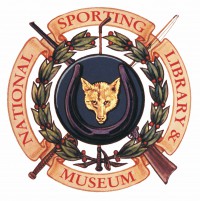Here in Virginia, we’re excited at the approach of a total solar eclipse which will occur in North America on August 21. While everybody is preparing to view this event, we were also reminded of another solar eclipse that left a major mark on the equestrian world.
On April 1, 1764, a solar eclipse occurred in Europe, with the maximum effect best seen in southeastern England and northern France. Viewing conditions were not ideal in London, leading observers to travel to Edinburgh to avoid cloud cover and get the best view. The eclipse began at 9:09 a.m., and continued until 11:53 a.m. Maximum obscuration was reported at 10:24 a.m. During the eclipse, the most valuable and influential horse in history was foaled.

The horse, who was named Eclipse for his foaling day, was bred by Prince William, Duke of Cumberland (1721-1765) and son of George II. Eclipse’s dam, Spilletta, was a granddaughter of the Godolphin Arabian, a foundational sire of the Thoroughbred breed.
Eclipse was headstrong and temperamental, and the chestnut stallion was renowned for his temper. We was worked constantly to tire him out, and the exercise made him easier to handle. Eclipse was large (sometimes criticized for having a big, unattractive head), and had great endurance for an era where horse racing was done in heats of two and four miles.

The racing career of Eclipse is remarkable, as the horse went undefeated in 18 races over two years. His jockey, Jack Oakley, habitually let Eclipse run as he pleased, and made few attempts to hold him back. After Eclipse’s second victory, he was purchased by Dennis O’Kelly (1725-1787), an adroit horse breeder and bettor who was renowned for winning a bet that placed “Eclipse first, the rest nowhere,” meaning no other horse would finish within 240 yards of Eclipse.

After two unbeaten campaigns, Eclipse was retired in large part because of a lack of challengers. It was impossible to find better odds against him than 20 to 1, and his value now resided at stud. His stud fee began at 50 guineas, and he went on to become the most successful sire in history, siring 344 winners of more than 158,000 pounds. It’s far easier to list Thoroughbreds that don’t count Eclipse in their background than those that do. It’s estimated that over 95% of Thoroughbreds can trace their pedigrees to Eclipse in the male line.

Eclipse died on February 27, 1789 of a violent colic. Dennis O’Kelly’s nephew Andrew contracted famous veterinary surgeon Charles Vial de Sanibel (1753-1793) to dissect the body. Sanibel wrote a book on Eclipse from his anatomical findings, measuring the horse in geometric relation to the size of his head in order to establish ideal proportions for representation in artwork and selection of animals for breeding. His skeleton is now housed at the Royal Veterinary College in Hertfordshire.

John Connolly has served as the George L. Ohrstrom, Jr. Head Librarian at the National Sporting Library & Museum (NSLM) since early 2014. He is responsible for the care of the Library collections, including books, magazines, photographs, diaries, letters, and much more. The NSLM collections span over 350 years of the history of equestrian sport, as well as fly fishing, wing shooting, and other field sports. Have a question? Contact John by e-mail

That was a very interesting blog. The percentage of horses tracing back to Eclipse is amazing.
LikeLike
Great and timely article, about an interesting and phenomenal horse. Hard to keep racing, with no one willing to run against you! Made up for that in the breeding shed it appears.
I am going to have to look back at some of my horses pedigrees, and see how often Eclipse has shined his brilliant light on my horses.
Thanks for another bright and illuminating read!
LikeLike
Excellent story.
LikeLike
Wonderful post, John. Love the accompaning illustrations.
LikeLike
Great article. What a horse! Should be a movie about him.
LikeLike